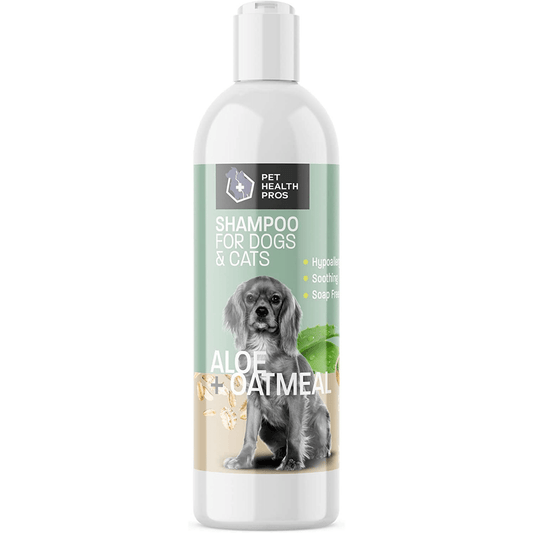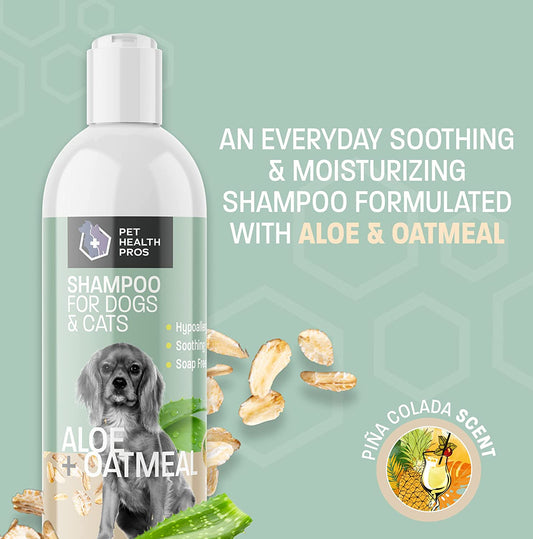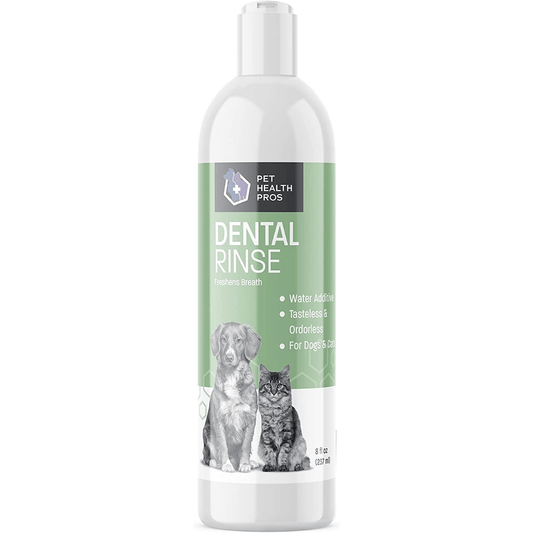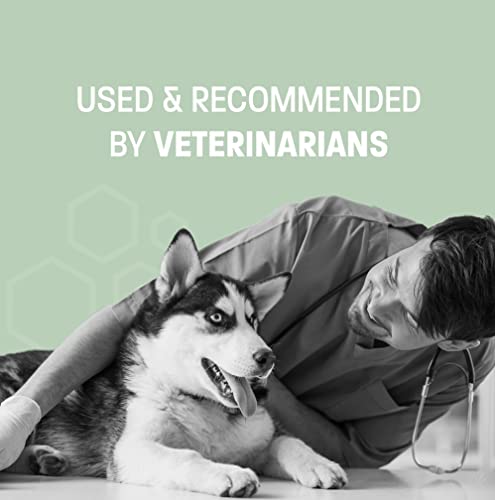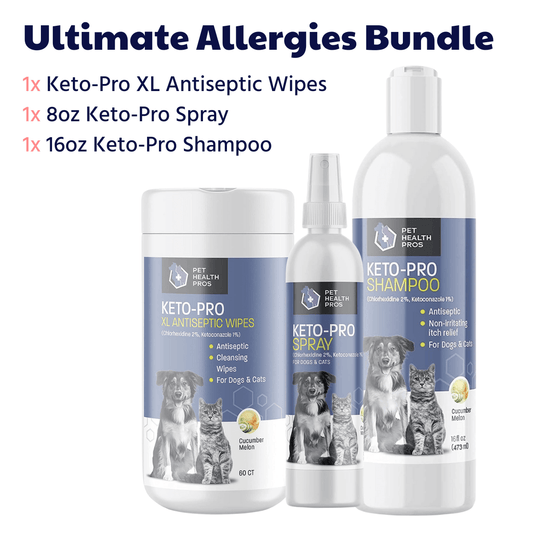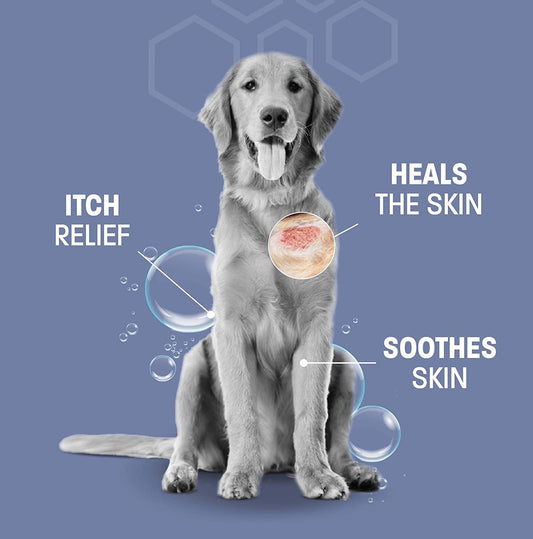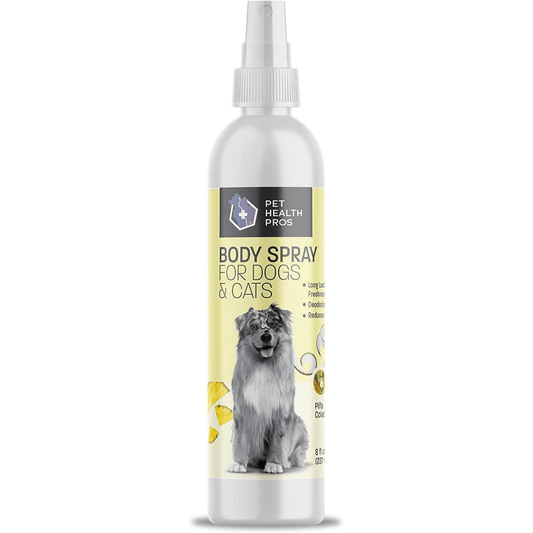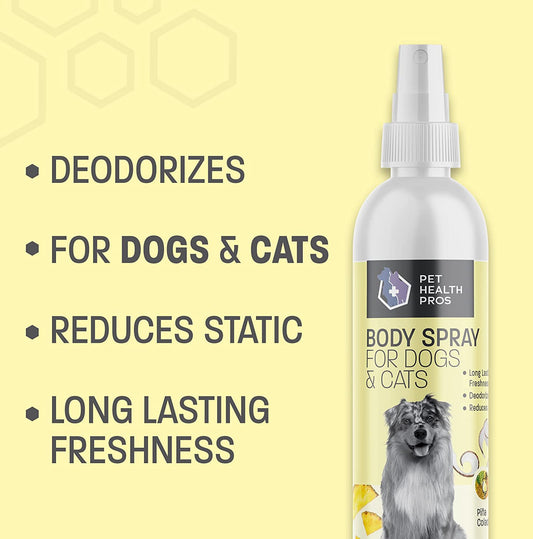Dog chewing behavior is a common issue faced by many pet owners. In this article, we will explore the reasons behind dog chewing, the impact of chewing on dogs' health, natural deterrents to discourage chewing, training techniques to discourage chewing behavior, and how to choose the right chewing repellent for your dog.
Key Takeaways
- Understanding the reasons behind dog chewing behavior is crucial in addressing the issue effectively.
- Natural deterrents such as herbal repellents, bitter-tasting sprays, and citrus-based solutions can be effective in discouraging chewing.
- Positive reinforcement methods and creating chewing-free zones are effective training techniques to discourage chewing behavior.
- Consider the safety and effectiveness factors when choosing a chewing repellent for your dog, taking into account the breed and application guidelines.
- Discouraging chewing behavior is important for the overall health and well-being of your dog.
Understanding Dog Chewing Behavior
Reasons Behind Dog Chewing
Dogs engage in chewing for a variety of reasons, ranging from natural instincts to behavioral issues. Puppies, for example, chew to alleviate the discomfort of teething, while adult dogs may chew to keep their jaws strong and teeth clean. Chewing can also be a coping mechanism for dogs dealing with anxiety or boredom.
- Teething: Puppies chew to soothe sore gums.
- Dental Health: Chewing helps maintain strong teeth and jaw muscles.
- Stress Relief: Chewing can reduce anxiety and provide comfort.
- Boredom: Lack of stimulation leads to chewing as a form of entertainment.
Tip: Always provide appropriate chew toys for your dog to prevent destructive chewing behavior.
Understanding the underlying cause of your dog's chewing is crucial in selecting the right deterrents and training methods to address the issue effectively.
Common Chewing Triggers
Reasons Behind Dog Chewing
Dogs chew for various reasons, including anxiety, boredom, teething, and exploration. Understanding the underlying cause of your dog's chewing behavior is crucial in addressing the issue effectively.
Common Chewing Triggers
Chewing triggers can include loneliness, lack of mental stimulation, and separation anxiety. Identifying these triggers can help in implementing appropriate solutions to discourage excessive chewing.
Impact of Chewing on Dogs' Health
Excessive chewing can lead to dental problems, digestive issues, and potential ingestion of harmful objects. It's important to address chewing behavior to ensure the overall well-being of your dog.
Impact of Chewing on Dogs' Health
Dog chewing behavior can have a significant impact on the health and well-being of our furry companions. Chewing helps maintain dental health by reducing plaque and tartar buildup, promoting healthy gums, and preventing dental diseases. Additionally, it provides mental stimulation and helps alleviate stress and anxiety in dogs. It's important to monitor your dog's chewing habits and provide appropriate outlets to support their overall health and happiness.
When considering the impact of chewing on dogs' health, it's essential to recognize the benefits of appropriate chewing behavior. Providing safe and suitable chew toys can help satisfy your dog's natural urge to chew while promoting dental health and mental well-being. It's important to choose chew toys that are durable, non-toxic, and appropriately sized for your dog's breed and size.
Considerations for Choosing Chew Toys
| Factors | Description |
|---|---|
| Durability | Choose toys made of sturdy materials that can withstand heavy chewing. |
| Safety | Ensure that the toys are non-toxic and do not pose a choking hazard. |
| Size | Select toys that are appropriate for your dog's breed and size to prevent potential injuries. |
Positive Reinforcement
Positive reinforcement techniques, such as rewarding your dog for chewing on appropriate items, can help encourage desirable chewing behavior. By praising and rewarding your dog when they chew on designated toys or objects, you can reinforce positive habits and discourage destructive chewing. Redirecting your dog's attention to approved chew toys and providing ample praise can effectively shape their chewing behavior.
Creating Chewing-Free Zones
Establishing designated areas where chewing is encouraged and providing alternative activities, such as interactive play and mental stimulation, can help create chewing-free zones in your home. This approach helps channel your dog's natural chewing instincts into appropriate outlets while minimizing the risk of destructive chewing on household items.
Tip: Supervise your dog's chewing activities and gradually introduce new chew toys to ensure they are well-received and safe for your pet's health and well-being.
Natural Dog Chewing Deterrents
Herbal Repellents
Understanding the need for dedicated products, we only use high-quality ingredients sourced locally in the US, providing the best experience for your furry members. Our herbal repellents are crafted in collaboration with veterinarians and are backed by a 100% satisfaction guarantee. Here's a table showcasing the effectiveness of our herbal repellents:
| Repellent Type | Effectiveness Rating |
|---|---|
| Herbal Repellents | 4.5 out of 5 |
| Bitter-Tasting Sprays | 4.2 out of 5 |
| Citrus-Based Solutions | 4.0 out of 5 |
Tip: When using herbal repellents, consistency is key. Apply the repellent in areas where your dog tends to chew, and reapply as needed to reinforce the deterrent effect.
Bitter-Tasting Sprays
Bitter-tasting sprays are a popular choice for discouraging dogs from chewing on furniture and other household items. These sprays contain natural, non-toxic ingredients that are safe for pets and effective in deterring chewing behavior. The bitter taste creates a negative association with the object, making the dog less likely to chew on it. When using bitter-tasting sprays, it's important to apply them consistently to the targeted areas and reapply as needed. Additionally, it's advisable to test a small area first to ensure compatibility with different surfaces.
When considering bitter-tasting sprays, pet owners should look for products that contain natural and non-toxic ingredients. These sprays are designed to be safe for pets while effectively discouraging chewing behavior. It's also important to follow the application and usage guidelines provided by the manufacturer to ensure optimal results.
- Natural, non-toxic ingredients
- Safe for pets
- Effective deterrent
- Consistent application and reapplication
- Compatibility testing on surfaces
Tip: Consistent and proper application of bitter-tasting sprays is key to effectively discouraging chewing behavior.
Citrus-Based Solutions
Citrus-based repellents are a popular natural choice for discouraging dogs from chewing on household items. The strong scent of citrus, such as lemon or orange, is generally unpleasant to dogs and can effectively deter them from nibbling on treated surfaces.
- Lemon juice solution: Mix equal parts of lemon juice and water to create a simple spray.
- Orange oil blend: Combine a few drops of orange essential oil with water for a stronger deterrent.
Always test a small area first to ensure that the citrus solution does not damage or stain the surface. Additionally, it's important to reapply the repellent regularly, as the scent will fade over time.
Tip: While citrus-based solutions are safe for most dogs, some may have a sensitivity to citrus. Observe your dog's reaction and consult with a veterinarian if you notice any adverse effects.
Training Techniques to Discourage Chewing
Positive Reinforcement Methods
Positive reinforcement is a powerful training technique that encourages good behavior by rewarding dogs for making the right choices. When a dog exhibits desirable behavior, such as choosing a toy over a forbidden item to chew, they receive a reward. This reward can be in the form of treats, praise, or playtime, reinforcing the behavior you want to see.
To effectively use positive reinforcement, consistency is key. Here's a simple guide to get started:
- Identify the behaviors you want to encourage.
- Choose a reward that your dog finds motivating.
- Reward the behavior immediately after it occurs.
- Gradually reduce the frequency of rewards as the behavior becomes habitual.
Remember, the goal is to make good behavior more rewarding than bad behavior. Avoid negative reinforcement, as it can lead to fear and aggression.
By using positive reinforcement, you can help your dog understand the boundaries of acceptable chewing and promote a harmonious living environment for both you and your furry friend.
Redirecting Chewing Behavior
When redirecting chewing behavior, it's important to use positive reinforcement methods to encourage alternative activities. Additionally, creating chewing-free zones in the house can help limit access to inappropriate items. Here's a quick overview of the training techniques:
- Positive reinforcement methods
- Redirecting chewing behavior
- Creating chewing-free zones
Remember to be patient and consistent with these techniques to effectively discourage chewing behavior.
Creating Chewing-Free Zones
When creating chewing-free zones for your dog, it's important to consider the layout of your home and the areas where your dog spends the most time. Designating specific areas as chewing-free zones can help reinforce boundaries and reduce the likelihood of destructive chewing behavior. Additionally, using baby gates or pet barriers can help restrict access to certain areas, providing a physical reminder for your dog. It's also beneficial to provide appropriate chewing alternatives in these zones, such as chew toys or interactive puzzles, to redirect your dog's chewing behavior. This encourages positive chewing habits and helps fulfill your dog's natural urge to chew.
To effectively implement chewing-free zones, consider the following:
- Designated Areas: Clearly mark and communicate the designated chewing-free zones within your home.
- Chew Toy Options: Offer a variety of chew toys and rotate them regularly to keep your dog engaged.
- Supervision: Monitor your dog's behavior in these zones and provide positive reinforcement when they choose appropriate chewing items.
Remember, consistency and positive reinforcement are key to successfully establishing and maintaining chewing-free zones in your home.
Choosing the Right Chewing Repellent for Your Dog
Considerations for Different Breeds
When considering the right chewing repellent for your dog, it's important to take into account the specific needs of different breeds. Each breed may have unique sensitivities and preferences, so it's essential to choose a repellent that is suitable for your dog's breed. Additionally, safety and effectiveness are key factors to consider when selecting a chewing repellent. Ensuring that the product is safe for your dog and effectively deters chewing behavior is crucial for their well-being.
To assist in making an informed decision, here are some important considerations to keep in mind:
- Breed Sensitivities: Different breeds may react differently to certain ingredients, so it's important to choose a repellent that aligns with your dog's breed characteristics.
- Safety and Effectiveness: Look for repellents that are non-toxic and safe for pets, while also being effective in discouraging chewing behavior.
- Application and Usage: Consider the ease of application and usage guidelines to ensure that the repellent fits seamlessly into your dog's routine.
Remember, the right chewing repellent can contribute to a healthier and happier life for your beloved pet.
Safety and Effectiveness Factors
When considering the safety and effectiveness factors of a chewing repellent for your dog, it's important to prioritize safety above all else. Look for products that are made with natural, non-toxic ingredients and have been tested for pet safety. Additionally, consider the effectiveness of the repellent in deterring chewing behavior without causing any harm to your dog. To help you make an informed decision, here are some key factors to consider:
- Ingredients: Check for natural, pet-safe ingredients such as herbal extracts, citrus oils, or bitter-tasting compounds.
- Testing and Certification: Look for products that have been tested and certified for pet safety by reputable organizations.
- User Reviews: Consider the experiences of other pet owners who have used the repellent to gauge its effectiveness.
Remember, the right chewing repellent should not only discourage chewing behavior but also ensure the well-being of your beloved pet.
Application and Usage Guidelines
When selecting a dog chewing repellent, it's essential to follow the application and usage guidelines to ensure the safety and comfort of your pet. Here are some key points to consider:
- Read the label carefully for specific instructions on how to apply the product. Some repellents may require a patch test to check for any adverse reactions.
- Apply the repellent in a well-ventilated area to avoid inhaling any fumes that might be harmful.
- Avoid applying the repellent directly onto areas where your dog has open wounds or sores.
- Reapply the repellent as directed, typically after cleaning the area or after a certain period has elapsed.
Tip: Always monitor your dog's reaction to the repellent. If you notice any signs of discomfort or allergic reaction, discontinue use immediately and consult your veterinarian.
Remember, the goal is to deter chewing without causing distress to your dog. By adhering to these guidelines, you can help create a safe environment that encourages positive behavior.
When it comes to keeping your dog healthy and happy, choosing the right chewing repellent is essential. At Pet Health Pros, we understand the importance of providing top-grade pet health supplies at affordable prices. Our products, made right here in the USA, are backed by a 100% satisfaction guarantee, so you can shop with confidence. Visit our website to explore our range of pet health supplies and give your furry friend the care they deserve.
Conclusion
In conclusion, addressing dog chewing behavior requires a combination of effective solutions and consistent training. By using positive reinforcement and implementing chewing repellent products, dog owners can effectively manage and redirect their pet's behavior. It is important to consult with a professional trainer or veterinarian to determine the most suitable approach for each individual dog. With patience and dedication, dog owners can successfully discourage unwanted chewing and create a harmonious environment for both themselves and their furry companions.
Frequently Asked Questions
What are the most common reasons behind dog chewing behavior?
Common reasons include teething, boredom, anxiety, and lack of exercise.
Are natural dog chewing deterrents safe for puppies?
Natural deterrents such as herbal repellents and bitter-tasting sprays are generally safe for puppies, but it's important to consult with a veterinarian before use.
How can I redirect my dog's chewing behavior without punishment?
Positive reinforcement methods, such as providing chew toys and offering praise for appropriate chewing, can effectively redirect chewing behavior without punishment.
Do citrus-based solutions work for all dog breeds?
Citrus-based solutions may work for some breeds but may not be effective for others. It's important to consider breed-specific preferences and sensitivities.
What are the key safety factors to consider when choosing a chewing repellent?
Safety factors include non-toxic ingredients, absence of harmful chemicals, and suitability for the dog's age and health condition.
Can I apply chewing repellent directly on my dog's chew toys?
It's generally safe to apply chewing repellent on chew toys, but it's important to follow the specific application and usage guidelines provided by the product manufacturer.


